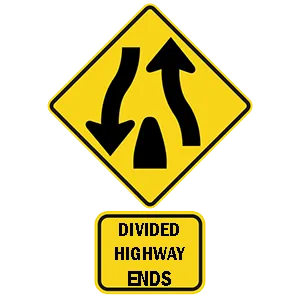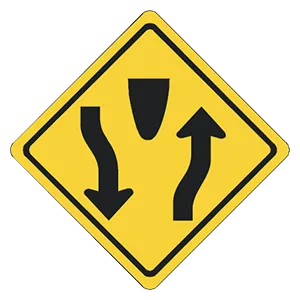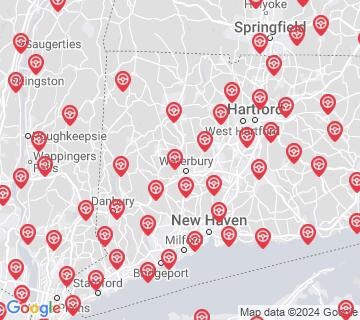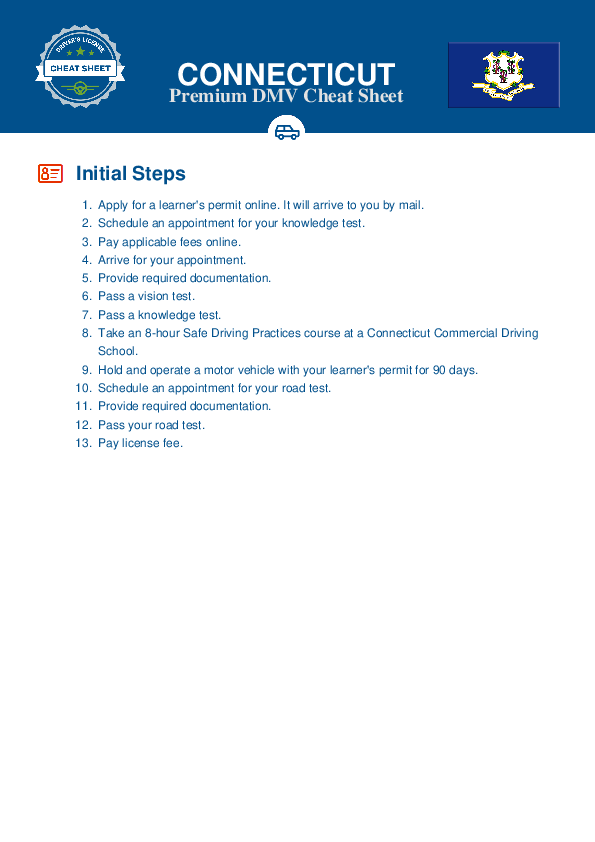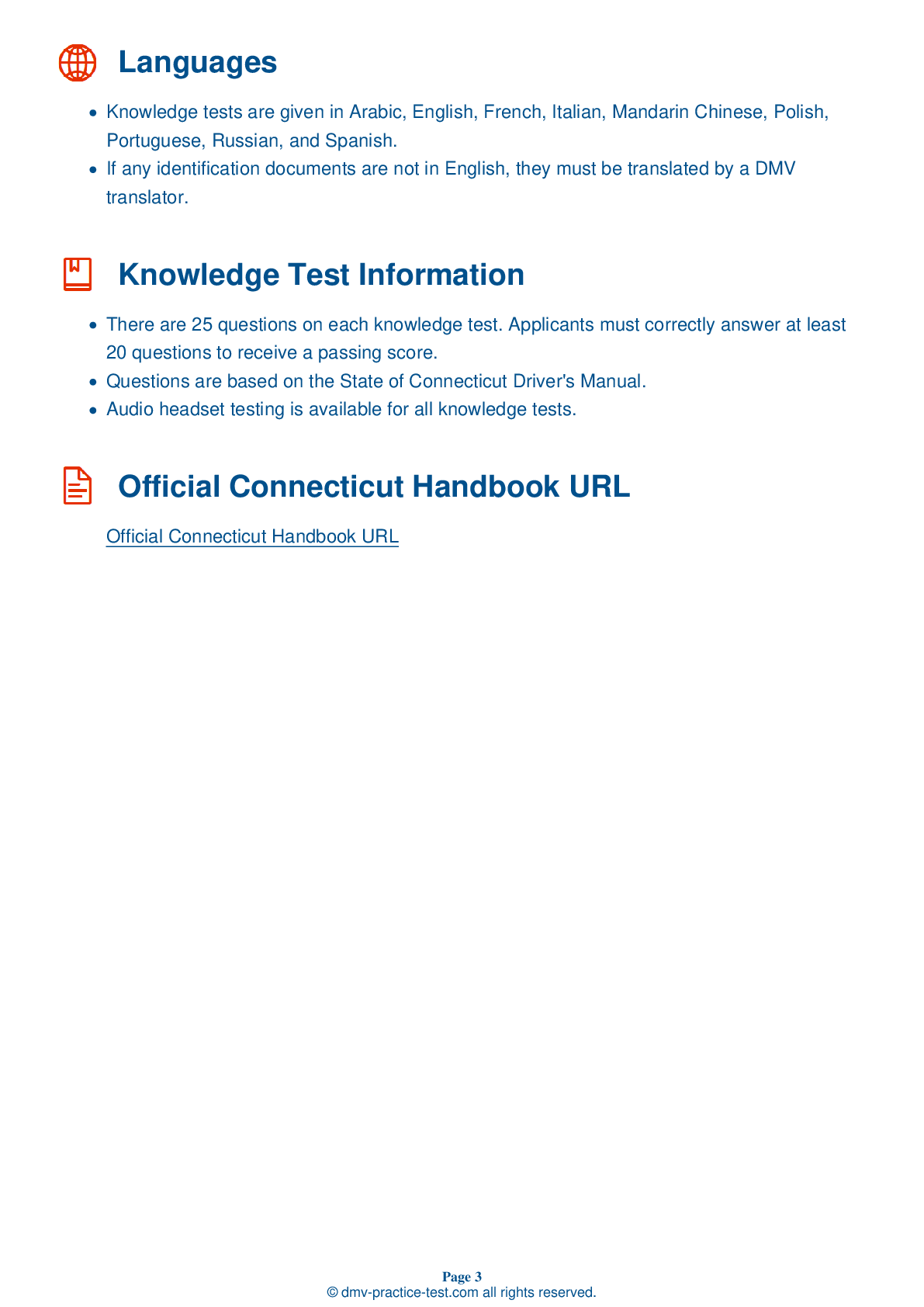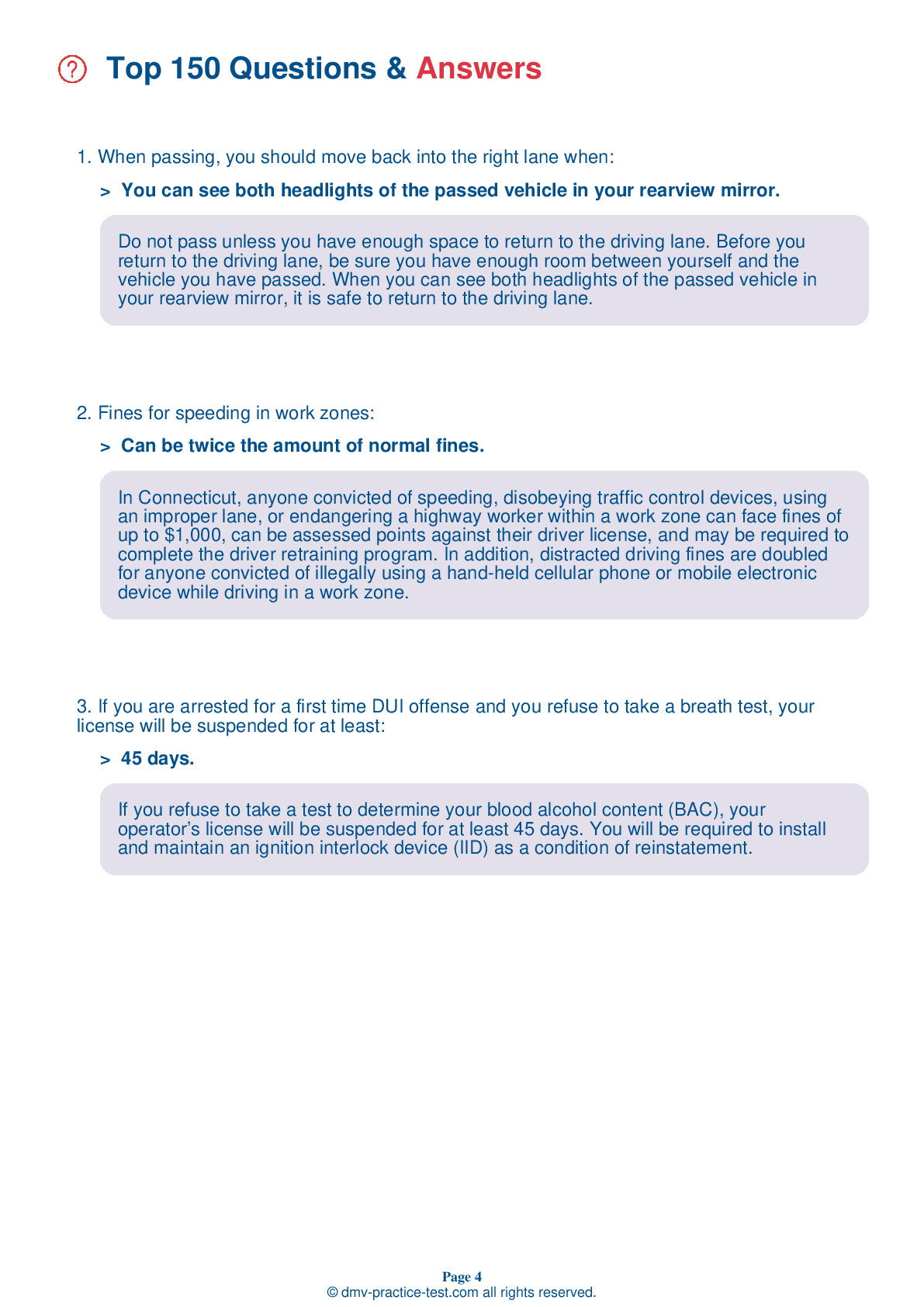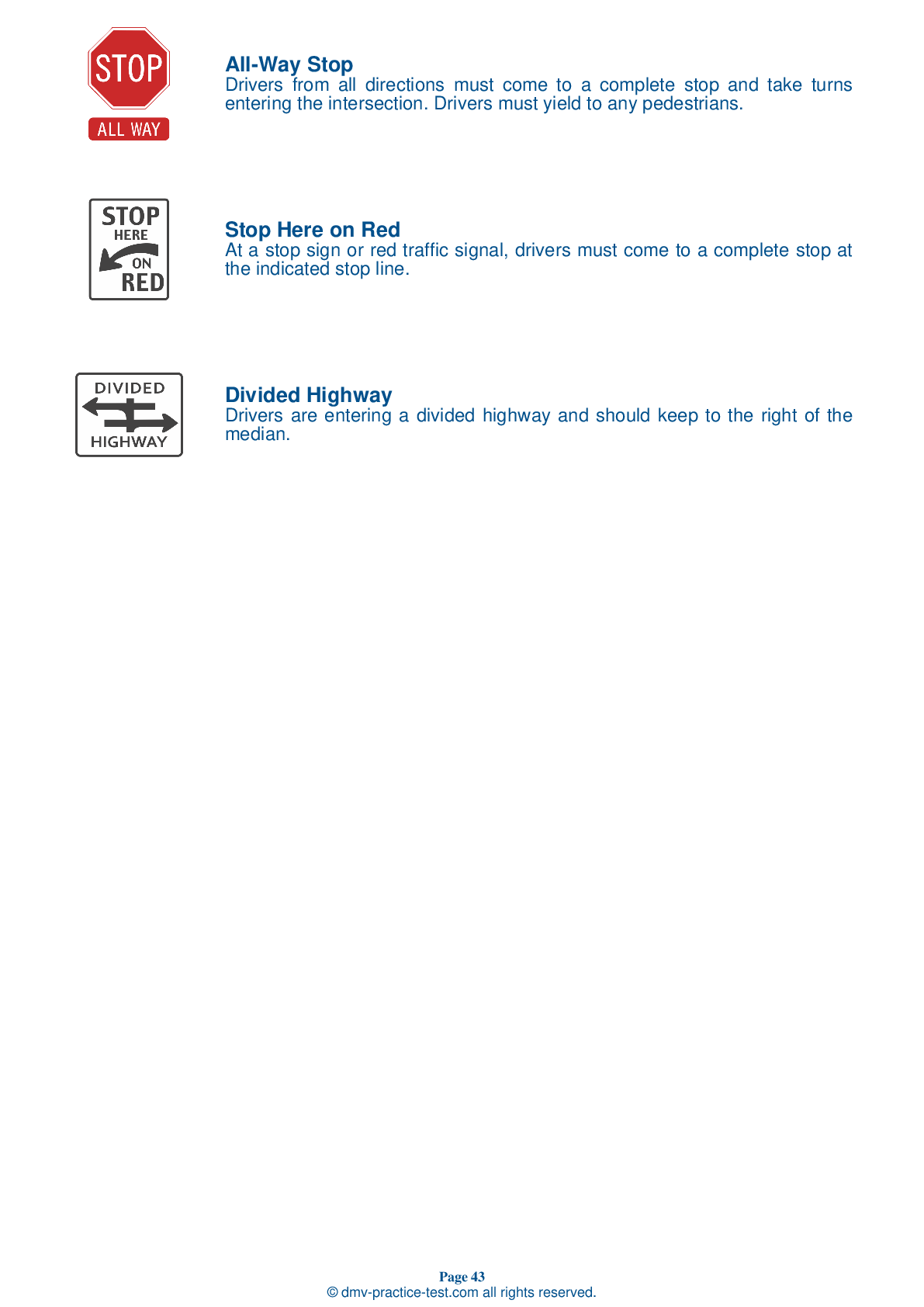FREE Connecticut DMV Practice Test #6
This set of Connecticut DMV practise tests was just updated for January 2025. It includes questions based on the Connecticut Driver Handbook's most essential traffic signs and regulations for 2025. Use actual questions that are very similar (often identical!) to the DMV driving permit test and driver's licence exam to study for the DMV driving permit test and driver's licence exam.
Each practise test question has a hint and explanation to assist you in remembering the concepts. The written component of the official DMV test will include questions about road rules, traffic signs, and driving statutes, as well as information from the Driver Handbook.
To achieve the required passing grade, you must correctly answer 20 of the 25 questions. Take our DMV practise exam to help you prepare for your Connecticut instruction permit or driver's licence.
The DMV exam is available in several languages.
Using any form of testing help will result in an automatic fail, and the DMV may take further action against your driver's licence, so avoid it.
1 . Which of these statements is true about changing lanes?
Before changing lanes, signal, look in all your mirrors, and look over your left or right shoulder to make sure the lane next to you is clear. Looking over your shoulder is a way to check your blind spot to be sure there is no vehicle, motorcycle, or bicycle traffic in the next lane.
2 . If your car begins to skid out of control, you should:
If your vehicle begins to skid, stay off the brakes. Continue to correct your steering until the vehicle is back under your control and moving safely down the road.
3 . As of August 1, 2008, what is the nighttime curfew for 16- and 17-year-old drivers?
Unless the teen is traveling for employment, school, religious activities, or medical necessity, or if the individual is an assigned driver in the Safe Ride Program, 16- and 17-year-old drivers are not permitted to drive between the hours of 11 p.m. and 5 a.m.
4 . When entering the interstate on a short entrance ramp where there is no acceleration lane, you should:
When entering the interstate on a short entrance ramp where there is no acceleration lane, speed up only after you have identified a gap in traffic. In general, you should be stopped while waiting for a gap to appear.
5 . If your car's suspension is bad, it can cause:
Your suspension helps you control your vehicle and provides a comfortable ride over varying road surfaces. If your vehicle bounces a lot after driving over a bump, or is generally hard to control, you may need new suspension parts.
6 . Blind spots are:
When changing lanes, look over your shoulder in the direction you plan to move. Check for obstructions near the rear corners of your vehicle. These areas are called “blind spots” because you cannot see them by using your mirrors.
7 . This sign means:
